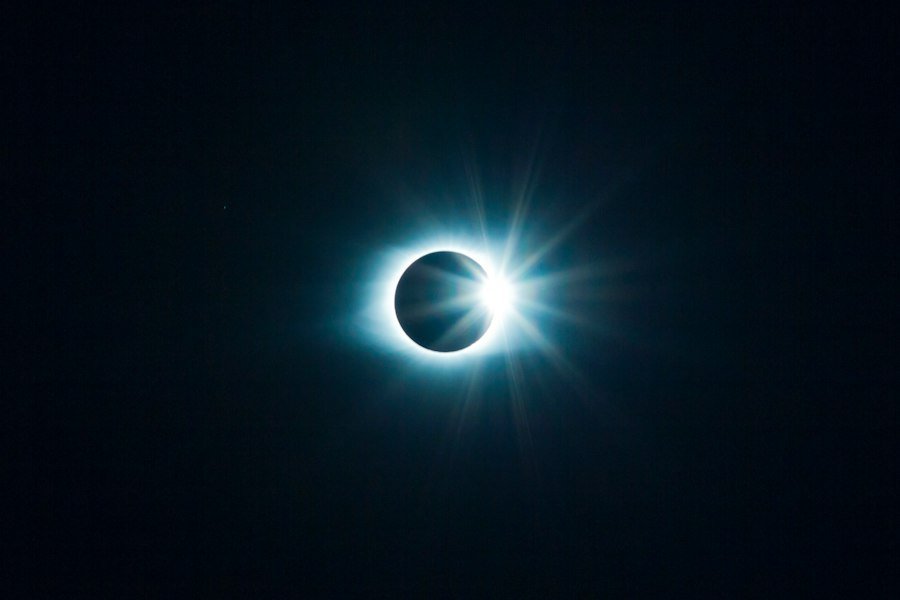Learning Spanish vocabulary for space and astronomy is becoming increasingly important in today’s globalized world. With the growing interest in space exploration and the advancements in technology, being able to discuss space-related topics in Spanish can open up new opportunities for communication and collaboration. Whether you are a student, a professional in the field, or simply someone who is fascinated by the mysteries of the universe, having a strong grasp of Spanish vocabulary in this area can enhance your understanding and appreciation of space and astronomy.
One of the key benefits of being able to discuss space-related topics in Spanish is the ability to connect with a wider audience. Spanish is one of the most widely spoken languages in the world, with over 460 million native speakers. By learning Spanish vocabulary for space and astronomy, you can engage with Spanish-speaking communities, share your knowledge and ideas, and collaborate on research projects or educational initiatives. This can lead to new insights, perspectives, and opportunities for collaboration that can enrich your own understanding and contribute to the advancement of space exploration and astronomy.
Table of Contents
ToggleKey Takeaways
- Spanish vocabulary for space and astronomy is important for effective communication in the field.
- Basic cosmic terms in Spanish include “universo” for universe and “planeta” for planet.
- The solar system in Spanish includes “Mercurio,” “Venus,” and “Tierra” for Mercury, Venus, and Earth.
- Stars and constellations in Spanish include “estrella” for star and “Orion” for Orion.
- The Milky Way and other galaxies in Spanish include “Vía Láctea” for Milky Way and “Andrómeda” for Andromeda.
- Discussing the universe in Spanish involves terms like “cosmos” and “big bang.”
- Space exploration and technology in Spanish include “exploración espacial” and “tecnología espacial.”
- Space travel and exploration in Spanish include “viaje espacial” and “exploración del espacio.”
- Astronomy plays an important role in Spanish culture, with events like the “Fiesta de las Estrellas” celebrating the stars.
- Tips for improving Spanish language skills in astronomy and space discussions include practicing with native speakers and using online resources.
Understanding Basic Cosmic Terms in Spanish
To effectively communicate about space and astronomy in Spanish, it is important to have a solid understanding of basic cosmic terms. These terms form the foundation of any discussion or study in this field. Some of the basic cosmic terms in Spanish include:
– Universo (Universe): Refers to all matter, energy, time, and space that exist.
– Galaxia (Galaxy): A large system of stars, gas, dust, and other celestial objects bound together by gravity.
– Estrella (Star): A celestial object that produces its own light and heat through nuclear reactions.
– Planeta (Planet): A celestial body that orbits around a star, is spherical in shape, and has cleared its orbit of other debris.
– Satélite (Satellite): An object that orbits around a planet or other celestial body.
– Cometa (Comet): A celestial object composed of ice, dust, and gas that orbits around the Sun.
– Asteroide (Asteroid): A small rocky object that orbits around the Sun, typically found in the asteroid belt between Mars and Jupiter.
Understanding these basic cosmic terms in Spanish is essential for effective communication and comprehension in the field of space and astronomy. It allows you to accurately describe and discuss various celestial objects, phenomena, and concepts.
Exploring the Solar System in Spanish
The solar system, or sistema solar, is a fascinating subject to explore in Spanish. It consists of the Sun, planets, moons, asteroids, comets, and other celestial objects that are bound together by gravity. Each planet in the solar system has its own unique characteristics and features. Here are some of the planets and their characteristics in Spanish:
– Mercurio (Mercury): El planeta más cercano al Sol (the planet closest to the Sun). Es el planeta más pequeño del sistema solar (It is the smallest planet in the solar system).
– Venus: El segundo planeta más cercano al Sol (The second planet closest to the Sun). Es conocido como el planeta hermano de la Tierra debido a su tamaño similar (It is known as Earth’s sister planet due to its similar size).
– Tierra (Earth): Nuestro planeta (Our planet). Es el único planeta conocido que alberga vida (It is the only known planet that harbors life).
– Marte (Mars): El cuarto planeta más cercano al Sol (The fourth planet closest to the Sun). Es conocido como el planeta rojo debido a su color característico (It is known as the red planet due to its characteristic color).
– Júpiter (Jupiter): El quinto planeta más cercano al Sol (The fifth planet closest to the Sun). Es el planeta más grande del sistema solar (It is the largest planet in the solar system).
– Saturno (Saturn): El sexto planeta más cercano al Sol (The sixth planet closest to the Sun). Es conocido por sus anillos característicos (It is known for its characteristic rings).
– Urano (Uranus): El séptimo planeta más cercano al Sol (The seventh planet closest to the Sun). Es conocido por su inclinación extrema y su color azul verdoso (It is known for its extreme tilt and its bluish-green color).
– Neptuno (Neptune): El octavo planeta más cercano al Sol (The eighth planet closest to the Sun). Es conocido por su color azul intenso y su atmósfera activa (It is known for its intense blue color and its active atmosphere).
Exploring the solar system in Spanish allows you to delve into the unique characteristics and features of each planet. It provides a deeper understanding of our cosmic neighborhood and the vastness of space.
Learning About Stars and Constellations in Spanish
Stars and constellations have captivated human beings for centuries. They have inspired myths, guided navigation, and sparked curiosity about the universe. Learning about stars and constellations in Spanish allows you to explore these celestial objects and their significance in different cultures. Here are some key terms related to stars and constellations in Spanish:
– Estrella fugaz (Shooting star): A streak of light that appears in the night sky when a meteoroid enters Earth’s atmosphere and burns up.
– Estrella polar (Pole star): The star that appears closest to the celestial north pole.
– Constelación (Constellation): A group of stars that form a recognizable pattern or shape.
– Osa Mayor (Ursa Major): A constellation that resembles a bear and contains the Big Dipper.
– Osa Menor (Ursa Minor): A constellation that resembles a bear and contains the Little Dipper.
– Orión (Orion): A constellation that is easily recognizable and contains the famous Orion’s Belt.
– Estrella binaria (Binary star): A system of two stars that orbit around a common center of mass.
– Estrella variable (Variable star): A star whose brightness changes over time.
Understanding the different types of stars and how they are classified in Spanish allows you to appreciate the diversity and beauty of the night sky. It also enables you to engage in discussions about stellar evolution, star formation, and other related topics.
Understanding the Milky Way and Other Galaxies in Spanish
The Milky Way, or Vía Láctea, is our home galaxy. It is a vast collection of stars, gas, dust, and other celestial objects. Learning about the Milky Way and other galaxies in Spanish allows you to explore the structure, composition, and evolution of these cosmic entities. Here are some key terms related to galaxies in Spanish:
– Galaxia espiral (Spiral galaxy): A type of galaxy characterized by a central bulge and spiral arms.
– Galaxia elíptica (Elliptical galaxy): A type of galaxy that is round or elliptical in shape.
– Galaxia irregular (Irregular galaxy): A type of galaxy that does not have a regular shape.
– Cúmulo de galaxias (Galaxy cluster): A group of galaxies that are bound together by gravity.
– Agujero negro (Black hole): A region in space where gravity is so strong that nothing can escape its pull, not even light.
Understanding the different types of galaxies and their characteristics in Spanish allows you to explore the vastness and diversity of the universe. It also provides insights into the formation and evolution of galaxies, as well as the role they play in shaping the cosmos.
Discussing the Universe in Spanish

The universe, or universo, is a vast and mysterious entity that encompasses all matter, energy, time, and space. It is a subject of great fascination and exploration. Learning about the universe in Spanish allows you to delve into the different theories about its origin and evolution. Here are some key terms related to the universe in Spanish:
– Big Bang: Gran Explosión (The Big Bang): The prevailing theory about the origin of the universe, which states that it began as a singularity and has been expanding ever since.
– Teoría del estado estacionario (Steady State Theory): A theory that suggests that the universe has always existed in a steady state and is not expanding.
– Teoría del universo oscilante (Oscillating Universe Theory): A theory that proposes that the universe goes through cycles of expansion and contraction.
– Teoría del multiverso (Multiverse Theory): A theory that suggests the existence of multiple universes, each with its own set of physical laws and properties.
Understanding the different theories about the origin and evolution of the universe in Spanish allows you to engage in discussions about cosmology, astrophysics, and other related fields. It also provides a deeper appreciation for the complexity and beauty of the cosmos.
Explaining Space Exploration and Technology in Spanish
Space exploration and technology have revolutionized our understanding of the universe. They have allowed us to explore distant planets, study celestial objects, and push the boundaries of human knowledge. Explaining space exploration and technology in Spanish allows you to discuss the different types of space missions and their objectives. Here are some key terms related to space exploration and technology in Spanish:
– Misión espacial (Space mission): A journey to space with a specific objective, such as scientific research or satellite deployment.
– Satélite artificial (Artificial satellite): A man-made object that orbits around a planet or other celestial body.
– Estación espacial (Space station): A large spacecraft that serves as a home and workplace for astronauts in space.
– Cohete (Rocket): A vehicle that is propelled by the expulsion of exhaust gases from its engines.
– Telescopio espacial (Space telescope): A telescope that is placed in space to observe celestial objects without the interference of Earth’s atmosphere.
Understanding the different types of space missions and their objectives in Spanish allows you to engage in discussions about space exploration, satellite technology, and other related topics. It also provides insights into the challenges and advancements in this field.
Discussing Space Travel and Exploration in Spanish
Space travel and exploration have captured the imagination of people around the world. The idea of venturing beyond Earth’s atmosphere and exploring distant planets and galaxies is both thrilling and awe-inspiring. Discussing space travel and exploration in Spanish allows you to explore the different types of space vehicles and their functions. Here are some key terms related to space travel and exploration in Spanish:
– Nave espacial (Spaceship): A vehicle designed for travel or operation in outer space.
– Transbordador espacial (Space shuttle): A reusable spacecraft that can transport astronauts and cargo to and from Earth’s orbit.
– Sonda espacial (Space probe): An unmanned spacecraft that is sent to explore celestial objects or gather scientific data.
– Rover (Rover): A robotic vehicle that is used for exploration on the surface of other planets or moons.
– Astronauta (Astronaut): A person who travels to space for scientific research or exploration.
Understanding the different types of space vehicles and their functions in Spanish allows you to engage in discussions about space travel, colonization of other planets, and other related topics. It also provides insights into the challenges and advancements in this field.
Understanding the Role of Astronomy in Spanish Culture
Astronomy has played a significant role in Spanish culture throughout history. From ancient civilizations to modern times, the study of the stars and celestial objects has influenced art, literature, and religious beliefs. Understanding the role of astronomy in Spanish culture allows you to explore the different cultural traditions and beliefs related to astronomy in Spanish-speaking countries. Here are some examples:
– Las Lágrimas de San Lorenzo (The Tears of St. Lawrence): In Spain, the Perseid meteor shower, which occurs in August, is known as “Las Lágrimas de San Lorenzo.” According to legend, these shooting stars represent the tears shed by St. Lawrence as he was being martyred.
– El Día de los Reyes Magos (Three Kings’ Day): In many Spanish-speaking countries, the celebration of Three Kings’ Day on January 6th is associated with the arrival of the Magi following a star to find the baby Jesus.
– Las Ruinas de Tulum (The Ruins of Tulum): The ancient Mayan city of Tulum in Mexico is known for its astronomical observatory, which was used by the Mayans to study celestial events and align their calendar with astronomical cycles.
Understanding the role of astronomy in Spanish culture allows you to appreciate the rich history and traditions associated with this field. It also provides insights into the cultural significance of celestial objects and phenomena.
Tips for Improving Your Spanish Language Skills in Astronomy and Space Discussions
Improving your Spanish language skills in astronomy and space discussions requires practice and dedication. Here are some practical tips to help you enhance your Spanish vocabulary in this field:
1. Read books and articles: Read books and articles about space and astronomy in Spanish. This will expose you to specialized vocabulary and help you improve your reading comprehension skills.
2. Watch documentaries and videos: Watch documentaries and videos about space and astronomy in Spanish. This will allow you to hear the vocabulary being used in context and improve your listening skills.
3. Take online courses: Take online courses or enroll in language classes that focus on space and astronomy. This will provide you with structured learning opportunities and allow you to interact with instructors and fellow students.
4. Practice speaking: Find language exchange partners or join conversation groups where you can practice speaking about space and astronomy in Spanish. This will help you improve your fluency and confidence in using the vocabulary.
5. Use language learning apps: Use language learning apps that offer specialized vocabulary lessons in space and astronomy. These apps often include interactive exercises, quizzes, and flashcards to help you reinforce your knowledge.
6. Visit observatories and planetariums: Visit observatories and planetariums in Spanish-speaking countries or attend virtual tours. This will allow you to engage with experts in the field, ask questions, and deepen your understanding of space and astronomy.
7. Join online forums and communities: Join online forums and communities dedicated to space and astronomy discussions in Spanish. This will provide you with opportunities to connect with like-minded individuals, ask questions, and share your knowledge.
8. Use specialized dictionaries and glossaries: Use specialized dictionaries and glossaries that focus on space and astronomy terminology in Spanish. This will help you expand your vocabulary and ensure accurate usage of terms.
By following these tips, you can improve your Spanish language skills in astronomy and become more proficient in discussing and understanding astronomical concepts in Spanish. Firstly, it is important to immerse yourself in Spanish-language resources related to astronomy. This can include reading books, articles, and scientific papers in Spanish, as well as watching documentaries or listening to podcasts in the language. Additionally, practicing speaking and writing about astronomy in Spanish is crucial. This can be done by participating in language exchange programs, finding conversation partners, or even joining online forums or discussion groups focused on astronomy in Spanish. Lastly, regularly reviewing and expanding your vocabulary related to astronomy will greatly enhance your ability to communicate effectively in the field. This can be achieved through flashcards, vocabulary lists, or even creating your own personalized glossary of astronomical terms in Spanish. Overall, consistent practice and exposure to the language will undoubtedly lead to significant improvements in your Spanish language skills in astronomy.








